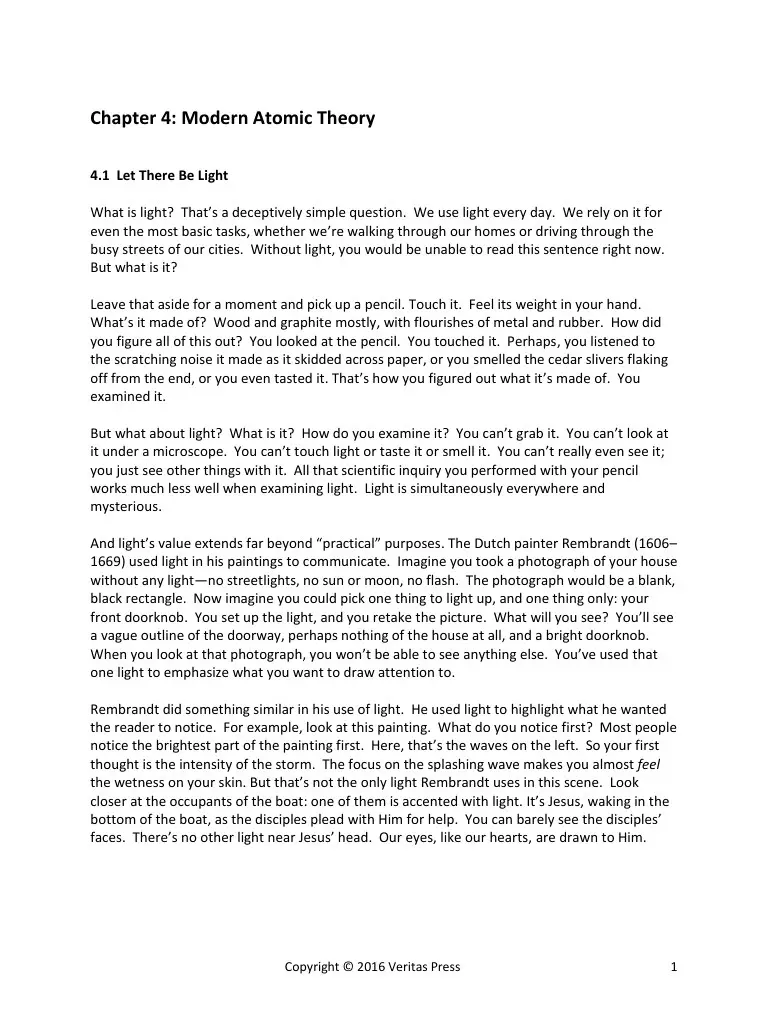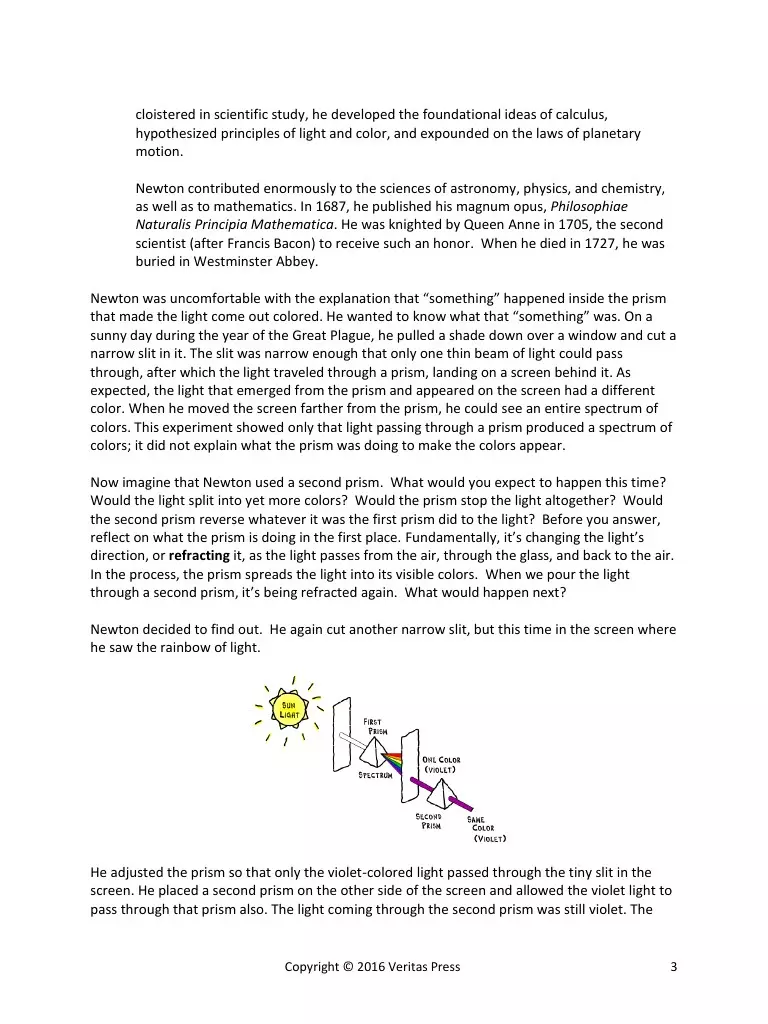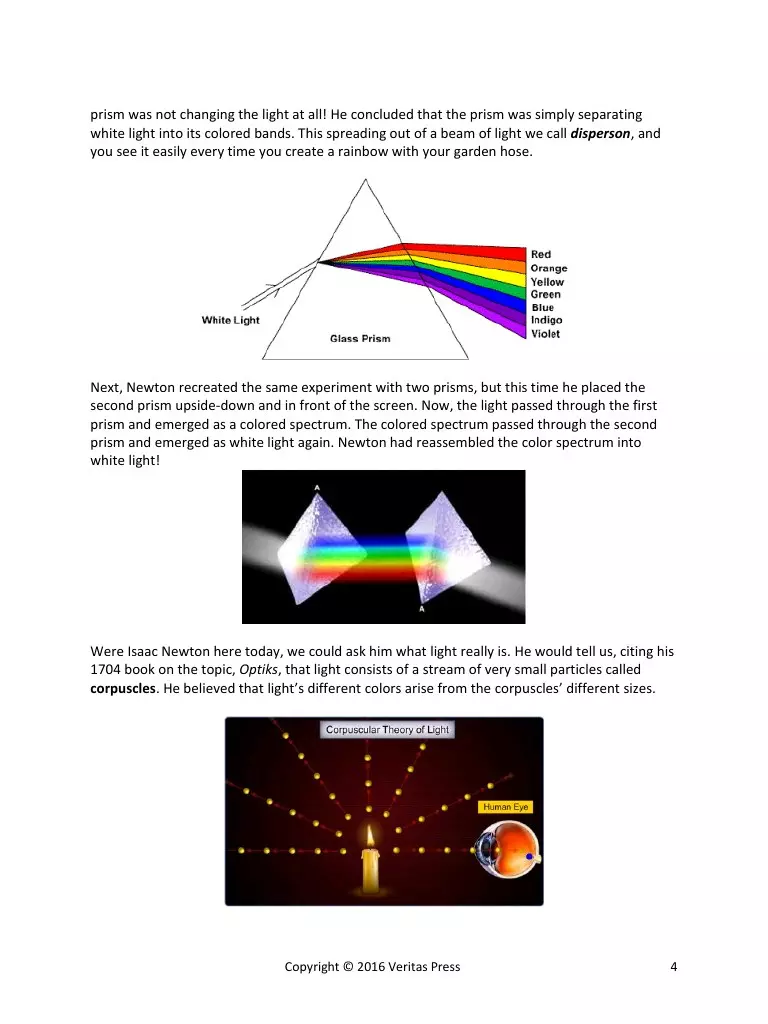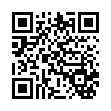Sci Che eBook (PDF)
File information
Author: Pamela Mork
This PDF 1.5 document has been generated by Microsoft® Word 2016, and has been sent on pdf-archive.com on 21/09/2016 at 19:38, from IP address 24.115.x.x.
The current document download page has been viewed 549 times.
File size: 1.31 MB (32 pages).
Privacy: public file





File preview
Chapter 4: Modern Atomic Theory
4.1 Let There Be Light
What is light? That’s a deceptively simple question. We use light every day. We rely on it for
even the most basic tasks, whether we’re walking through our homes or driving through the
busy streets of our cities. Without light, you would be unable to read this sentence right now.
But what is it?
Leave that aside for a moment and pick up a pencil. Touch it. Feel its weight in your hand.
What’s it made of? Wood and graphite mostly, with flourishes of metal and rubber. How did
you figure all of this out? You looked at the pencil. You touched it. Perhaps, you listened to
the scratching noise it made as it skidded across paper, or you smelled the cedar slivers flaking
off from the end, or you even tasted it. That’s how you figured out what it’s made of. You
examined it.
But what about light? What is it? How do you examine it? You can’t grab it. You can’t look at
it under a microscope. You can’t touch light or taste it or smell it. You can’t really even see it;
you just see other things with it. All that scientific inquiry you performed with your pencil
works much less well when examining light. Light is simultaneously everywhere and
mysterious.
And light’s value extends far beyond “practical” purposes. The Dutch painter Rembrandt (1606–
1669) used light in his paintings to communicate. Imagine you took a photograph of your house
without any light—no streetlights, no sun or moon, no flash. The photograph would be a blank,
black rectangle. Now imagine you could pick one thing to light up, and one thing only: your
front doorknob. You set up the light, and you retake the picture. What will you see? You’ll see
a vague outline of the doorway, perhaps nothing of the house at all, and a bright doorknob.
When you look at that photograph, you won’t be able to see anything else. You’ve used that
one light to emphasize what you want to draw attention to.
Rembrandt did something similar in his use of light. He used light to highlight what he wanted
the reader to notice. For example, look at this painting. What do you notice first? Most people
notice the brightest part of the painting first. Here, that’s the waves on the left. So your first
thought is the intensity of the storm. The focus on the splashing wave makes you almost feel
the wetness on your skin. But that’s not the only light Rembrandt uses in this scene. Look
closer at the occupants of the boat: one of them is accented with light. It’s Jesus, waking in the
bottom of the boat, as the disciples plead with Him for help. You can barely see the disciples’
faces. There’s no other light near Jesus’ head. Our eyes, like our hearts, are drawn to Him.
Copyright © 2016 Veritas Press
1
In Rembrandt’s hands, light highlights the important, the striking, even the divine. Light catches
our eyes because we see by means of it. Like the Scriptures show us where to focus our hearts
and minds, light shows us where to focus our eyes.
As fascinating as this is, it doesn’t tell us what light is. Scientists throughout history have had
the same problem we did: it’s difficult to isolate light in order to observe it. So instead of
examining it up close, they employ a different tactic. They propose theories and then begin
experiments to see how well light’s characteristics match their theories. Is light made up of tiny
particles of such slight mass that we cannot feel them when they strike us? If so, we ought to
be able to run an experiment that demonstrates this. Or perhaps light is a wave, bouncing off
whatever it strikes? Experimentation ought to reveal this.
4.2 Hide Your Light Under a Prism? No!
In the 1600s, it was common knowledge that light passing through a prism produced colored
light. Scientists hypothesized that something in the prism changed the color of the light. Isaac
Newton observed this colored light and was curious about exactly what happened inside the
prism to change the light.
Biographical Pullout
Isaac Newton (1642–1727)
Isaac Newton was born on Christmas Day in 1642, during the English Civil War. His
father died three months before he was born, and his mother remarried and left threeyear-old Isaac behind with his grandmother. An uncle recognized Newton’s intellect and
encouraged him to pursue university studies. At Trinity College, Cambridge, Newton
pursued studies in basic philosophy, mathematics, history, and science, and he
voraciously read advanced physics. He graduated in 1665, intending to continue his
studies.
But just at that time, the bubonic plague resurfaced in England, killing an estimated
100,000 people in London alone. For the safety of its students and professors, the
University of Cambridge closed for two years. Most students would have seen this as a
welcome break from studying, but Newton returned home to experiment. While
Copyright © 2016 Veritas Press
2
cloistered in scientific study, he developed the foundational ideas of calculus,
hypothesized principles of light and color, and expounded on the laws of planetary
motion.
Newton contributed enormously to the sciences of astronomy, physics, and chemistry,
as well as to mathematics. In 1687, he published his magnum opus, Philosophiae
Naturalis Principia Mathematica. He was knighted by Queen Anne in 1705, the second
scientist (after Francis Bacon) to receive such an honor. When he died in 1727, he was
buried in Westminster Abbey.
Newton was uncomfortable with the explanation that “something” happened inside the prism
that made the light come out colored. He wanted to know what that “something” was. On a
sunny day during the year of the Great Plague, he pulled a shade down over a window and cut a
narrow slit in it. The slit was narrow enough that only one thin beam of light could pass
through, after which the light traveled through a prism, landing on a screen behind it. As
expected, the light that emerged from the prism and appeared on the screen had a different
color. When he moved the screen farther from the prism, he could see an entire spectrum of
colors. This experiment showed only that light passing through a prism produced a spectrum of
colors; it did not explain what the prism was doing to make the colors appear.
Now imagine that Newton used a second prism. What would you expect to happen this time?
Would the light split into yet more colors? Would the prism stop the light altogether? Would
the second prism reverse whatever it was the first prism did to the light? Before you answer,
reflect on what the prism is doing in the first place. Fundamentally, it’s changing the light’s
direction, or refracting it, as the light passes from the air, through the glass, and back to the air.
In the process, the prism spreads the light into its visible colors. When we pour the light
through a second prism, it’s being refracted again. What would happen next?
Newton decided to find out. He again cut another narrow slit, but this time in the screen where
he saw the rainbow of light.
He adjusted the prism so that only the violet-colored light passed through the tiny slit in the
screen. He placed a second prism on the other side of the screen and allowed the violet light to
pass through that prism also. The light coming through the second prism was still violet. The
Copyright © 2016 Veritas Press
3
prism was not changing the light at all! He concluded that the prism was simply separating
white light into its colored bands. This spreading out of a beam of light we call disperson, and
you see it easily every time you create a rainbow with your garden hose.
Next, Newton recreated the same experiment with two prisms, but this time he placed the
second prism upside-down and in front of the screen. Now, the light passed through the first
prism and emerged as a colored spectrum. The colored spectrum passed through the second
prism and emerged as white light again. Newton had reassembled the color spectrum into
white light!
Were Isaac Newton here today, we could ask him what light really is. He would tell us, citing his
1704 book on the topic, Optiks, that light consists of a stream of very small particles called
corpuscles. He believed that light’s different colors arise from the corpuscles’ different sizes.
Copyright © 2016 Veritas Press
4
Newton would add that the material of the prism imparts a spin to the particle of light as it
passes through. The spin of the particle varies, depending on the size of the particle, just as the
spin a quarterback puts on a football varies, depending on the size of the football. This
understanding of light is called the corpuscular theory.1
Other scientists of the day strongly disagreed with Newton’s explanation of light. Christiaan
Huygens /Hoy genz/,2 a Dutch physicist, had previously conducted experiments that strongly
showed that light has wave properties, since it clearly diffracts, or bends, as it passes through a
slit.3
Newton squabbled with these other scientists in public, in writing, and in the scientific
academies. He and his supporters believed that the scientific evidence supported the
hypothesis that light was composed of a stream of particles, while Huygens and his supporters
saw much evidence that light was composed of waves.
1
Corpuscular come from the Latin corpusculum, meaning “a little body” or particle.
2
The Dutch sounds closer to /How ghenz/.
Be exceedingly careful not to confuse these three related terms: refraction, diffraction, and dispersion. Refraction
is always due to the passage of light from one medium to another, and diffraction is always due to the passage of
light through a slit or around an object. By whichever means, refraction or diffraction, dispersion is the separation
of white light into colors.
3
Copyright © 2016 Veritas Press
5
The differences of opinion over whether light was a particle or a wave, each backed by
excellent experimental data, remained unresolved at the time of Newton’s death.
Once Newton showed that white light was composed of a rainbow of colors, other scientists
began to investigate the properties of the different colors. Englishman William Herschel
conducted an elegantly simple experiment where he measured the temperature of each color.
The temperatures of the different colors varied slightly, but, most surprisingly, the hottest
temperature was just beyond the red band. This was the first indication of invisible light and led
to the discovery of infrared (IR) light. If you’ve studied Latin, you may remember that “infra”
means “below” or “lower than.” Infrared light was thought of as “below” the red color on the
light spectrum.
Scientists sometime act like tracking dogs on the scent of a great discovery! No sooner did
Herschel present evidence of light beyond the red band than Johann Ritter, a German scientist,
set about to find light just beyond the violet band. Ritter shined light on a sample of silver
chloride. The light induced a chemical reaction that began to decompose it. Next, Ritter shined
each individual color of light on the substance. He showed that violet light was more efficient at
decomposing silver chloride than red light was, but that the light just beyond violet light caused
the decomposition to happen fastest. Eventually, this extra strong light came to be called
ultraviolet (UV) light. Once again, Latin comes into play. Ultra means “beyond” or “on the
other side of.” Ultraviolet light is “beyond” the violet.
Other scientists discovered light beyond the ultraviolet and the infrared. In fact, the spectrum
of light does not seem to end. In this regard science seems similar to light. There is always one
more discovery or one more observation to be made. This is one reason scientific discovery
engenders such tremendous excitement around the world.
Copyright © 2016 Veritas Press
6
Section Review Questions
1. When Newton passed only the violet light through the second slit and prism, the light
remained violet. What did he conclude?
2. Would he have come to a different conclusion had he passed green light through the slit
and prism and the light remained green?
3. Had Newton passed violet light through the second slit and prism, but it had changed
colors, what might he have concluded?
4. What was the major difference between Newton’s and Huygens’s views of light?
Answers:
1. Newton concluded that the prism was not changing light, since the violet light passed
through unchanged. He concluded that the prism separated white light into colors, but
that the colors could not be further separated by a second prism.
2. No, he would have drawn the same conclusion had he used green light.
3. If the violet light passing through the second prism had changed colors, Newton might
have concluded that something in the prism was indeed changing light and, perhaps, he
would have continued to search for what that something was.
4. Newton saw light as a stream of differently sized particles, while Huygens viewed light
as having wave properties similar to those observed in water. There was good evidence
in the 17th century to support both views.
4.3 The New Wave
Newton’s corpuscular theory fell into disuse after his death, and the wave model of light
dominated science in the 1800s. Light waves were easily produced and moderately easy to
measure and study. Scotsman James Clerk Maxwell, less well-known than Einstein but equally
important to modern science, showed that electricity, magnetism, and light were forms of the
same sort of energy, electromagnetic (EM) radiation. Before Maxwell, the three were studied
as separate disciplines (because thought of as separate phenomena). In the 1860s Maxwell
showed that light waves, like other waves of EM radiation, are variations of electric and
magnetic fields that carry energy from one place to another.
Before we go further, let’s be careful not to confuse EM radiation with the radioactive decay we
studied in the previous chapter. Now the exception to that general rule. There is one point of
overlap worth mentioning: gamma rays. Consider gamma rays and ultraviolet light for a
moment. Though both are part of the EM spectrum, they are produced by different processes
and have sorely different impacts on living organisms. Even small doses of radiation from
Copyright © 2016 Veritas Press
7
gamma rays, produced by nuclear changes in an atom, can penetrate tissue and cause cancer.
The greatest risk of short-term exposure to ultraviolet radiation, however, is sunburn!
Maxwell’s work almost completely solidified the scientific world’s view of light; throughout the
rest of the 19th century, researchers interpreted the results of their experiments from the
foundational belief that light is a wave and not a particle at all. It appeared that Newton’s
corpuscular theory had been discarded entirely.
As scientists, we must be careful to remember that what appears proven, such as the notion
that light is merely a wave, may in fact be wrong. We need to approach new evidence, and new
interpretations of the evidence, with an open mind. In the early 1900s, one particular
experiment stunned and confused the scientific community. Let’s see if we can envision this
experiment and experience a bit of the conundrum into which this experiment plunged the
scientists of the day.
Imagine that you have a sheet of metal. In fact, let’s say you’ve purchased a golden newspaper.
What happens when you shine a flashlight onto it? Does the golden newspaper absorb the
light’s energy? If it does, does it get warmer? Or, perhaps, the newspaper merely reflects the
light and nothing much else happens? Under Maxwell’s theory that light was a wave of EM
energy, we might expect the golden newspaper to emit, or give off, electrons. According to this
new theory of light, light waves would strike some of the electrons in the gold atoms and knock
them loose, sending them flying off into space.
Now imagine that you’ve got a flashlight with a dial on the side that adjusts the brightness of
the light. Twist the dial one way, and the light grows dimmer; twist it the other, and it gets
brighter, or more intense. What happens when you shine this brighter, more intense, light on
the golden newspaper? If Maxwell was right, then we’d expect that the electrons that fly off
would do so with greater energy. Light waves of varying intensities should emit electrons of
varying energies, shouldn’t they?
This is the experiment that German physicist Philipp Lenard performed in the early 1900s,
minus the golden newspaper. In the experiment, called the photoelectric effect experiment,
Lenard shined light on the surface of a metal. The light transferred its energy to electrons in the
metal, and some of those energized electrons were then emitted from the surface.
Lenard tried lights of different intensities. Based on the Maxwell wave theory of light, Lenard
expected brighter light to kick off electrons that were more energetic and dimmer light to kick
Copyright © 2016 Veritas Press
8
off electrons that were less energetic. Think of a baseball game. When a batter hits a ball hard,
the ball travels quickly into the outfield as a line drive. The same batter, hitting the ball with less
intensity, may send the ball only a short distance as a grounder. Maxwell thought the same
was true of light. After all, it makes sense that high intensity light would transfer more energy
to departing electrons than lower intensity light would.
But that wasn’t what happened. To everyone’s surprise, no matter how intense the light, the
electrons left the surface of the metal with the same energy. Think back to our golden
newspaper. Lenard showed that even if you increase the intensity of the light you shine, the
electrons won’t absorb any more energy. Was Maxwell’s understanding of light flawed?
Albert Einstein resolved the discrepancy between Maxwell’s wave theory of light and the
photoelectric effect observed by Lenard. In a 1905 paper, he proposed that light consists of
photons, which are massless bundles, or particles, of light. Increasing the intensity, or
brightness, of light only means that more photons are present, not that they are more
energetic. Since every photon excites one and only one electron, increasing light’s intensity,
and therefore the number of photons present, only increases the number of released electrons.
It does not increase their energy. Electrons can absorb only a set amount, or quantum, of
energy. The photoelectric effect is the most direct and convincing evidence that light has a
particle, as well as a wave, nature. Perhaps, Newton’s understanding of light had been
discarded too quickly.
The concept that light possesses both wave and particle characteristics turned the world of
physics upside down and gave birth to a field of study called quantum mechanics. In classical
mechanics, the kind of physics of motion that Newton practiced and studied, energy could
manifest at any value you could imagine, just as the turtle in the picture can be at any point on
the ramp.
Classical Mechanics
Turtle can be present
anywhere, at any value, on the ramp.
Quantum Mechanics
Turtle can be present only at certain
allowable values.
In quantum mechanics, the kind of physics for which Einstein laid a foundation, small particles,
like electrons and photons, can possess only certain values, or amounts, of energy. We call
those values the allowable energies. To continue our analogy of the turtle, the turtle in the
second picture can be on one step or another, but never in between. In quantum mechanics,
similarly, the energy of small particles can be one value or a different value, but none of the
values that lie between them.
Copyright © 2016 Veritas Press
9
Download Sci Che eBook
Sci_Che_eBook.pdf (PDF, 1.31 MB)
Download PDF
Share this file on social networks
Link to this page
Permanent link
Use the permanent link to the download page to share your document on Facebook, Twitter, LinkedIn, or directly with a contact by e-Mail, Messenger, Whatsapp, Line..
Short link
Use the short link to share your document on Twitter or by text message (SMS)
HTML Code
Copy the following HTML code to share your document on a Website or Blog
QR Code to this page

This file has been shared publicly by a user of PDF Archive.
Document ID: 0000485640.